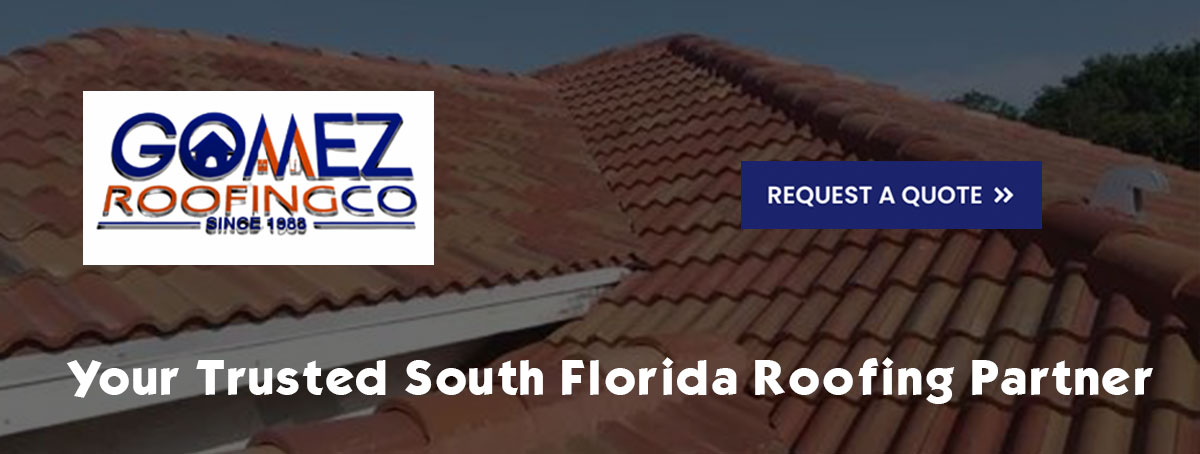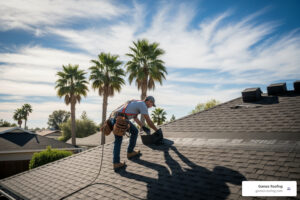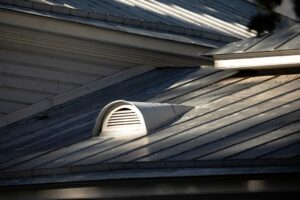TPO vs. EPDM vs. PVC Roofing: Cost & Lifespan
Single-ply roofing membranes—TPO, EPDM, and PVC—offer homeowners durable, energy-efficient solutions for flat and low-slope roofs. Understanding their composition, expected lifespan, and installation costs empowers you to make an informed investment that balances upfront expense with long-term performance. This guide defines single-ply roofing, examines each material’s benefits and drawbacks, provides a direct comparison table, outlines key decision factors for Florida’s climate, and shows how Gomez Roofing’s 40+ years of expertise supports seamless selection and installation.
What Are Single-Ply Roofing Systems and Why Are They Ideal for Homeowners?
Single-ply roofing systems consist of factory-manufactured sheets installed in one layer, offering consistent protection, low maintenance, and rapid installation. Homeowners appreciate their light weight, energy-saving reflectivity, and compatibility with solar panels.
What Defines Single-Ply Membrane Roofing?
Single-ply membranes are flexible sheets made from synthetic polymers—TPO, EPDM, PVC—designed to resist UV, moisture, and temperature extremes. Their seamless installation reduces leak risk and simplifies maintenance, delivering reliable weatherproofing.
The advantages of single-ply systems transition naturally into why they suit residential flat roofs.
Benefits of Single-Ply Roofing Systems
Single-ply roofing systems offer several advantages, including energy efficiency, lightweight construction, fast installation, waterproofing capabilities, durability, versatility, and ease of maintenance, making them a practical and cost-effective roofing choice.
This source highlights the general advantages of single-ply roofing, which provides context for the comparison of TPO, EPDM, and PVC.
Why Choose Single-Ply Roofing for Residential Flat Roofs?
Homeowners choose single-ply for its cost-effective coverage, minimal intrusion during installation, and reflective surfaces that cut cooling bills. The membranes’ flexibility accommodates structural movement, reducing stress on roof components.
Understanding the category paves the way to compare the leading materials specifically.
How Do TPO, EPDM, and PVC Fit into Single-Ply Roofing?
TPO, EPDM, and PVC each serve as single-ply solutions with distinct attributes: TPO excels in energy efficiency, EPDM in affordability and elasticity, and PVC in chemical resistance. Their differences guide selection based on climate, budget, and property needs.
What Is TPO Roofing and How Does Its Lifespan and Cost Affect Homeowners?
TPO (Thermoplastic Polyolefin) is a rubber-like membrane with a reflective white surface that enhances energy efficiency and reduces cooling costs by up to 20%. Its welded seams form a watertight bond, making TPO ideal for warm climates.
What Is TPO Roofing: Composition and Key Benefits?
TPO consists of a poly-propylene and ethylene-propylene rubber blend, reinforced with polyester. It delivers high UV resistance, good puncture strength, and heat-welded seams that simplify repairs and extend service life.
How Long Does a TPO Roof Last and What Factors Influence Its Lifespan?
A TPO roof typically endures 15–20 years, with premium formulations lasting up to 30 years. Lifespan depends on seam quality, membrane thickness (45–80 mil), UV exposure, and proper installation technique.
How Long Does a TPO Roof Last?
A well-maintained TPO roof can last for 15 to 20 years, with some lasting up to 25 to 30 years, but the actual lifespan can vary based on factors like climate, maintenance, and installation quality.
This source provides information on the lifespan of TPO roofs, which is essential for homeowners considering this material.
What Are the Typical Costs of TPO Roofing for Residential Properties?
Residential TPO installation averages $4–$14 per square foot, influenced by membrane thickness, attachment method, roof complexity, and removal of old materials. Quality underlayment and thorough insulation can add to upfront cost but improve longevity.
What Are the Pros and Cons of TPO Roofing for Homes?
Advantages include energy savings from high reflectivity, low maintenance, and heat-welded seams. Drawbacks encompass potential formulation inconsistencies across manufacturers and reduced chemical resistance compared to PVC.
How Does EPDM Roofing Compare in Lifespan and Cost for Residential Use?
EPDM (Ethylene Propylene Diene Monomer) is a synthetic rubber membrane prized for its affordability, flexibility, and proven track record in diverse climates. Its seamless appearance and black surface distinguish it from plastic alternatives.
What Is EPDM Roofing and What Makes It Unique?
EPDM is fabricated from durable synthetic rubber and available in black or white EPDM. Its membrane resists ozone and extreme temperatures, while adhered or mechanically-fastened seams use tapes or adhesives rather than heat welding.
How Durable Is EPDM Roofing and What Is Its Expected Lifespan?
With proper maintenance, EPDM roofs last 20–30 years, with some projects reaching 40 years. Seam adhesives and regular inspections of flashing areas are key to maximizing durability.
What Is the Cost Range for EPDM Roofing Installation on Homes?
EPDM typically costs $4–$12 per square foot installed. Lower membrane price, straightforward attachment methods, and minimal specialized equipment contribute to its affordability.
What Are the Advantages and Disadvantages of EPDM Roofing for Homeowners?
EPDM excels in elasticity and cold-weather performance. It offers simple repairs but absorbs heat in its black form, increasing cooling loads unless white EPDM is selected. Seam tapes require monitoring over time.
What Are the Lifespan and Cost Considerations of PVC Roofing for Homeowners?
PVC (Polyvinyl Chloride) is a premium single-ply membrane known for superior chemical and grease resistance. Its white, reflective surface improves energy efficiency while heat-welded seams deliver robust integrity.
What Is PVC Roofing and Why Is It Known for Chemical Resistance?
PVC comprises a vinyl polymer reinforced with stabilizers and pigments. Its membrane withstands oils, greases, and chemicals, making it ideal near HVAC units or restaurant kitchens.
TPO vs. PVC Roofing: Comparing the Differences & Benefits
PVC roofing systems offer excellent chemical resistance, making it a suitable choice for buildings with potential exposure to chemicals, grease, and oils, while TPO membranes may react to oil or exhaust from grease traps.
This source provides information on the chemical resistance of PVC and TPO roofing materials, which is a key factor in material selection.
How Long Does PVC Roofing Typically Last in Residential Settings?
PVC roofs last 20–30 years on average, with engineered formulations reaching 40+ years under gentle climates. Seam welds and alloy blends contribute to its extended service life.
What Are the Installation and Material Costs of PVC Roofing?
Installation ranges from $5.50–$18 per square foot, reflecting higher material cost and specialized welding equipment. Premium membranes may carry larger warranties that offset lifecycle expenses.
What Are the Key Pros and Cons of PVC Roofing for Residential Roofs?
PVC offers unmatched chemical resistance, high reflectivity, and strong seams. Drawbacks include higher upfront cost and potential brittleness in freezing temperatures if not properly insulated.
How Do TPO, EPDM, and PVC Roofing Materials Compare Directly for Homeowners?
Below is a side-by-side comparison of key performance attributes to guide your roofing decision based on longevity, cost, durability, and energy efficiency.
| Material | Expected Lifespan | Installed Cost | Durability | Energy Efficiency | Seam Type | Chemical Resistance |
|---|---|---|---|---|---|---|
| TPO | 15–20 years | $4–$14/ft² | Good UV and puncture resistance | High reflectivity (~White) | Heat-welded | Moderate |
| EPDM | 20–30 years | $4–$12/ft² | Excellent flexibility, moderate puncture resistance | Moderate (black absorbs heat) | Adhesive/Tape | Low |
| PVC | 20–30+ years | $5.50–$18/ft² | Superior seam strength, fire resistance | High reflectivity | Heat-welded | Excellent |
This data clarifies each membrane’s cost-to-performance ratio, leading into factors that influence selection for Florida homes.
What Factors Should Homeowners Consider When Choosing Between TPO, EPDM, and PVC?
Choosing the right membrane depends on climate stressors, budget limits, and specific property needs.
How Does Florida’s Climate Affect Roofing Material Performance?
Florida’s intense UV exposure and high humidity accelerate membrane degradation. Reflective surfaces like TPO and PVC reduce heat gain, while EPDM needs white options or coatings to mitigate thermal loading.
How Do Budget and Long-Term Value Influence Roofing Choices?
Balancing upfront installation cost with expected lifespan and maintenance needs reveals lifecycle value. EPDM offers low entry cost, TPO balances moderate cost and reflectivity, while PVC demands higher investment for premium durability and chemical resistance.
What Property-Specific Needs Impact Material Selection?
Foot traffic, rooftop HVAC or kitchen vents, and solar panel installation affect membrane choice. PVC resists grease spills, EPDM tolerates snow and ice movement, and TPO integrates easily with photovoltaic mounting systems.
How Do Warranty and Financing Options Affect Homeowner Decisions?
Manufacturer warranties range from 10 to 30 years. Gomez Roofing provides free next-day quotes, flexible financing plans, and workmanship guarantees that complement manufacturer coverage for added peace of mind.
How Does Gomez Roofing Support Homeowners in Choosing and Installing TPO, EPDM, and PVC Roofs?
Gomez Roofing brings over 40 years of specialized experience in single-ply membranes, ensuring installations meet Florida’s strict building codes and quality standards.
What Experience Does Gomez Roofing Bring to Single-Ply Roofing Installations?
Our certified crews have completed hundreds of residential and commercial single-ply projects, including complex solar integrations and bespoke underlayment systems that enhance durability.
How Does Gomez Roofing Ensure Quality and Warranty Coverage?
We honor full manufacturer warranties and back every installation with a workmanship guarantee. Rigorous quality control procedures and on-site inspections maintain the highest standards.
What Financing and Quote Options Are Available for Homeowners?
Homeowners can take advantage of zero-down financing, flexible payment terms, and free next-day estimates. These options simplify decision-making and deliver transparent cost projections.
How Can Homeowners Get Started with Gomez Roofing’s Services?
Explore our commercial TPO roofing services on the Gomez Roofing site or visit the Gomez Roofing home page to request a free consultation and quote.
What Are the Most Common Homeowner Questions About TPO, EPDM, and PVC Roofing?
Which Single-Ply Roof Lasts the Longest?
PVC generally offers the longest lifespan (20–30+ years), followed closely by EPDM (20–30 years). TPO typically endures 15–20 years.
What Is the Cheapest Single-Ply Roofing Material?
EPDM is the most affordable, with installed costs ranging from $4 to $12 per square foot.
Is TPO Better Than EPDM for Residential Use?
TPO excels in energy savings due to its reflective surface, while EPDM provides superior elasticity and easier seam repairs. The optimal choice depends on climate and long-term cost priorities.
What Are the Disadvantages of PVC Roofing?
Higher upfront cost and susceptibility to brittleness in extreme cold are the primary drawbacks of PVC.
How Much Does It Cost to Replace a TPO Roof?
Residential TPO replacement typically costs $4–$14 per square foot, influenced by membrane gauge, removal requirements, and roof complexity.
Long-term roof performance hinges on selecting the right single-ply membrane for your Florida home’s climate, budget, and usage patterns. With expert guidance from Gomez Roofing’s seasoned teams, homeowners gain clarity on lifespans, costs, and material suitability—backed by comprehensive warranties and flexible financing. Reach out today for a free quote and protect your property with confidence.




